The 90s was quite a time for video games. Sure, it was way before people gyrated and pop-locked in front of their Kinect or player characters regained health simply by hiding behind a wall and playing patty cake for a few seconds, but man was it a blast.
The era of the arcade was still in half-swing.
(Yes kids, arcades, those run down places your parents tell you to avoid with fat, hairy guys named “Earl” there to empty out the coin trays.)
Consoles were just beginning to edge arcades out as the main video game medium, and the console war was coming to a head, but one genre of video gaming has always kept chugging away in the nerdy shadows since it’s inception in 1952 and it doesn’t seem to be stopping any time soon.
Computer games.
The 90s were responsible for some of the best computer games ever created that set the high bar for games developed today; except for the guy who thought it was a good idea to invent DRM. Screw that guy.
 10: King’s Quest V: Absence Makes the Heart Go Yonder!
10: King’s Quest V: Absence Makes the Heart Go Yonder!
“Graham, watch out!” – Cedric the owl
Following a long line of games with bad, grammar school level puns for subtitles (King’s Quest III: To Heir Is Human. Really?), King’s Quest V (1990), was the first point-and-click graphic adventure game of both the series and the Sierra On-Line company (Which later became simply “Sierra”).
This was a huge step up from the text-based adventures people were so accustomed to in computer games. It was also the first game to make use of a newfangled Video Graphics Array (VGA), or what is now commonly known as a “video card,” installed physically into a computer to increase it’s graphical capabilities a whopping two megabytes worth.
King’s Quest V took the player on an epic quest across a perilous land filled with wonder, intrigue, mystery and death.
Oh, lots and lots of death.
In the game, you play as King Graham, the monarch of a picturesque fantasy land known as “The Kingdom of Daventry.” Whilst Graham is conveniently out on a walk to find a plot device, the evil wizard, Mordack, steals Castle Daventry.
Yup. The whole castle.
After returning to find his castle, and family, gone, King Graham is confronted by Cedric, a talking owl in a blue waistcoat and monocle who whisks him away to the land of Serenia to speak to his master, the good wizard Crispin, who gives King Graham his old wand and a piece of white snake that lets him talk to animals.
Bear with me, it gets loads more LSD-induced than that.
Everything kills you which, somehow, adds to the fun of puzzle solving. They also expect the player to make grand bounds of logic like throwing a boot you randomly find in the desert at a cat to save a mouse who then chews through your rope about 4-5 hours later in-game to save you from indefinite captivity and death.
Seriously, how could anyone have missed that?
This game, the first of its kind, will go down in the annals of history as one of the most absurd games ever made, but that, inherently, makes it one of the most unforgettable.
“Find the blue pages.” – Achenar
“Find the red pages.” – Sirrus
Myst (1990) was one of the first video games that attempted to appeal to adults, because we all know adults don’t play video games, right “Dead or Alive: Xtreme Beach Volleyball?”
Myst, written by Robyn and Rand Miller and released by Cyan (Now, Cyan Worlds), was based loosely around “The Mysterious Island” by Jules Verne. At the time of its release, it was one of the most immersive puzzle games ever developed.
It had one of the most recognizable gameplay styles that is still copied by subsequent puzzle titles to this day. The game innovatively incorporated the concept of graphic adventure with first-person point and click interfacing. This allowed for the player to feel as if they were “there,” so to speak.
The story of Myst begins when the “Stranger” (the player) finds a book entitled “Myst” describing an island of the same name… Myst.
When the Stranger touches the last page, they are transported to the ghostly, moody isle and are forced to explore their surroundings which include a rocket ship, an observatory, a small forest, and countless other little mind-flogging nooks and crannies discovered throughout the game.
The most notable of these is the library where you will find two books containing Sirrus and Achenar, the only two sons of Atrus, the man who lives on the island with his wife, Catherine.
When it’s said that Sirrus and Achenar are in the books, they’re in the books. When the Stranger looks into the books, they can only see and hear the sons through either red or blue static… Unless you can find enough red or blue pages spread across the “Ages” to understand them.
The “Ages” are the other beautifully-rendered worlds accessed through Myst by a series of book-portals.
We get it. Reading is fundamental.
“ROAAARRROOOUUURRR!” – Everything
DOOM(1993), designed by John Romero, developed by id Software and published by GT Interactive Software, spawned an entirely new genre of game, the “First Person Shooter” (FPS). You can thank DOOM for Call of Duty, Halo and the Goldeneye tournaments we all had as kids (Always pick Oddjob. Always.). In fact, you can also thank the developers for adding a multiplayer aspect to it, making DOOM not only the first FPS, but the first multiplayer FPS.
DOOM is a game where you fight your way through hell.
Of course, everyone knows that hell is on Mars (Mars’ moons Phobos and Deimos to be exact).
The player assumes the role of a nameless space marine whose animated face, shown in the bottom-center of the screen’s heads-up display, takes damage as the player does, showing him with just a little nosebleed to full-on brutalized at lower health.
The player must defeat demons, possessed zombie-humans, floating heads, a bunch of other demonic henchmen and, finally, the cyberdemon lord, described by the game manual as simply “A missle-launching skyscraper with goat legs.”
Even saying the words “cyberdemon lord” aloud can make one’s nerd-sense tingle from impending danger.
The weaponry was ridiculously awesome. From the lowly pistol and shotgun, to the BFG 9000 (That’s “Big F****** Gun” 9000. Yes, this game is that bad-ass.), players gunned, chainsawed, punched and exploded their way through the creepy, blood and gore-filled levels and their parents’ peace of mind.
The game was so popular, a myriad of other titles were released with the same gameplay concept, and many times the same game engine, of DOOM at their core. These were known as “DOOM clones” and included Heretic, Hexen, Dark Forces, Quake and the infamous Duke Nukem 3D.
The legacy of DOOM is never-ending within the video game world. It almost makes one forgive John Romero for Daikatana.
Almost…
“The rivers will flow with the blood of those who oppose us.” – Kane, a pretty bad guy
Faster than you could say “im in ur base killin ur d00dz,” Command & Conquer (1995), now commonly known as Command & Conquer: Tiberium Dawn, was developed by Westwood Studios (Now owned by EA) and published by Virgin interactive. It revolutionized the genre of real-time strategy games, which had been previously established by Dune II in 1992.
C&C is a game of chess that moves at ninety miles an hour with infantry instead of pawns and tanks that shoot fire instead of knights. It combined the concept of military strategy, resource management and base management into an easy-to-use/hard-to-master style of gameplay and, like many of its concurrent titles, it also included an online multiplayer.
The story, told through cheesy Full-Motion Videos with real actors, takes place in an alternate universe 1995 where the world is split into two discernable factions, the good guys and the bad guys. Sorry, the Global Defense Initiative and the Brotherhood of Nod.
The GDI is the UN on crack, a worldwide defense network of every nation’s martial powers pooled into one. Although more powerful than their Nod counterparts, GDI units are much slower and less flexible on the battlefield. Their mega-weapon is the epic Ion Cannon that can easily turn the tide of a battle.
The Nod are basically a bunch of well-funded terrorists banded together under the shadowy, monolithic and bald/goateed figure simply known as “Kane.” Their units are much faster and stealthier, but can’t take or dole out nearly as much punishment. Like the GDI, the Nod have an überweapon as well, the common nuclear missile. However, their defense buildings are bolstered by the “Obelisk of Light”, a constructible tower of laser death for all enemy infantry nearby.
The two factions battle over the mysterious, coveted and toxic alien mineral known as “Tiberium,” both the prize, and the cost, of war. It is a strange substance that remains generally shrouded in ambiguity as humanity has no idea what it is, but wants it to power their stuff.
But there’s a war on and that’s what matters. Lets be serious, here. Flame tanks.
“Hail to the king, baby.” – Duke Nukem
Now this is a man’s game. That is, if by “man,” you mean the juvenile, womanizing and trashy 80s action flick hero tween boys from the 1990s loved.
Developed by 3D Realms and published by GT Interactive Software, Duke Nukem 3D (1996) saw DOOM’s violence and demonic imagery and raised it misogyny, profanity and anti-establishment humor.
Duke, himself, is a steroid filled amalgamation of every single cheesy action hero from Jack Burton to Ash Williams. He spouts a one-liner every few seconds of gameplay and makes comments about every slightly raunchy thing he sees or hears. If there are none around, he’ll just say something raunchy to fill the void.
There is yet to be another video game character filled with such blatant testosterone. So much so that steroids are used as power-ups.
The game begins immediately where the second left off, like most B-movie sequels. Duke Nukem is flying back to earth in his stolen alien space ship after saving the world (Again). He’s hoping to vacation in LA but he is shot down by… That’s right, you guessed it.
Aliens.
Aliens who are stealing our women.
Mistake.
You, Duke, are now tasked with saving the world (and its women) yet again. Are you a bad enough dude to do so?
The unique weapons you happen across are equally entertaining, including such gems as a shrink ray, the “HoloDuke” (a holographic projector used to distract enemies) and, of course, Duke’s boot, AKA the “Mighty Foot.”
With a game this good, and a character this memorable, players were practically guaranteed to expect a stellar sequel right away that would both stay true to the roots of the game, but still provide something fun and new…
Right 3D Realms?
Right?
Bueller?
“LFG.” – Everyone
The game behind the game, Everquest(1999), developed and published by Sony Online Entertainment, was a fantasy-themed massively multiplayer online role-playing game (or MMORPG), a term coined by Richard Garriott, developer of Ultima Online(1997). It was one of the first of it’s kind to have graphics on a level that rivaled some FPSs at the time without really sacrificing any gameplay.
Gameplay, meaning the strangely addicting tedium of wandering throughout the world of Norrath, leveling up, questing and joking with the group you found in Greater Faydark about the cleric you refused to KEI after he aggroed a mob because his guild ninja-looted your plat from that yellow grimling fleshsoother in your last raid so now he can’t PL his tank.
What a riot, that one.
EQ was based on the original Multi User Dungeons (or MUD) of the late 80s in which many players would take part in a text adventure, gaining experience, leveling up, looting treasure, etc. In fact, EQ itself was actually known as a “Graphical MUD” for a fair amount of time.
When it comes to the overarching theme of the game, the name pretty much speaks for itself.
You quest.
Forever.
There are Game Masters (GMs), staff players hired by SOE, that are paid to make quests, shuffle the game along and prevent exploitation and/or hacking. They also serve as technical support in case you encounter a glitch or problem in the game, of which there were many. Nevertheless the game was, and is, rock solid with an equally fervent fanbase, regardless of glitches.
Sadly, EQ will forever live in infamy as “that MMORPG before World of Warcraft.”
“M-M-M-M-MONSTER KILL!” – Announcer
Computer games seem to have a fallen into the habit of having very self-explanatory titles.
Unreal Tournament(1999), developed by Epic Games and Digital Extremes and published by GT Interactive, is no different.
This is gladiatorial combat in the far future where, instead of swords and shields, there are biohazardous material-spewing rifles and pneumatic impact hammers. The players form teams (or, you know, don’t) and decimate eachother on the arena-like battlefields designed perfectly for fast, fun, on the run gunning.
Every weapon is relatively unique and has a secondary fire option, from the “Ripper”, a slingshot-like gun that fires giant ricocheting and decapitating/exploding razor blades to the “Flak Cannon,” a shotgun-like firearm which sprays out chunks of white-hot metal with a secondary flak grenade that exploded upon impact.
The “Redeemer,” a guided/unguided mini-nuke launcher, is the be-all and end-all weapon of the game. “The alpha and the omega,” so to speak.
One well placed Redeemer shot and it’s all over.
To add, every level was just as expansive or as claustrophobic as it needed to be for the variety of game modes (Deathmatch, Team DM, Capture the Flag, Domination, Last Man Standing and Assault).
It was a good game, flat out, and one of the best, if not the best, multiplayer FPS game ever made.
Fun fact: The lead designer of this game, Cliff Bleszinski (AKA CliffyB), is responsible for the critically acclaimed Gears of War series.
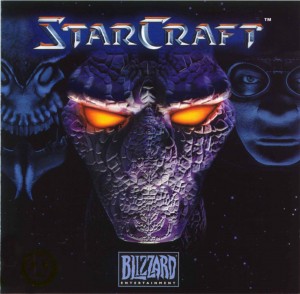 3: Starcraft
3: Starcraft
“Kekekekekekekekekekekeke.” – Zergling
Starcraft(1998), developed and published by Blizzard Entertainment, is what happens when you combine the successful military RTS gameplay of Command & Conquer with space, better graphics, better multiplayer, more faction choices and a much more advanced system of micro/macromanaging troops and resources.
Lets not forget about additional Pylons, those are rather necessary.
Starcraft also has a far more imaginative story, however visibly similar to the universe of Robert Heinlein’s 1958 novel Starship Troopers and the Warhammer 40,000 tabletop game.
The story centers around three races/factions:
The Terrans are criminals, cybernetically enhanced and genetically mutated humans exiled from earth and sent to settle the “Koprulu Sector” in the far reaches of the Milky Way Galaxy, are the most balanced race. They’re great to learn on as their units are not all too unfamiliar to the average person. They’re humans and they fight like humans with bullets, tanks, flamethrowers and, of course, nukes.
The Protoss are the alien version of Spartan warriors from the planet Aiur (One not unlike earth), but with added religiously zealotry. They have very advanced psychic abilities and their units are shielded by plasma energy and also teleport structures in as opposed to building them like the Terrans.
Finally, the Zerg are insect-like beings whose sole purpose of existence is to assimilate new DNA and incorporate it into their species. They act like locust, spreading through the galaxy and consuming all in their path. Everything, including their buildings, are made from organic material. They are controlled, at first, by the overmind and then later by… something else…
Starcraft has become so popular that it has not only garnered itself a successful sequel, but it’s now edging in to be the national sport of both North and South Korea. Currently, it’s just under Tae Kwon Do.
“War. War never changes.” -Narrator (Ron Perlman)
Fallout is the only serious video game in the world that a player could beat in ten minutes if they wanted to.
There has yet to be an RPG with the same freedom, the same storytelling and the same stylistically grand scope as the post-apocalyptic, bird’s-eye view, Mad Max-esque Fallout(1997). It, and its developer, BlackIsle Studios, a division of Interplay Entertainment Corporation, are legendary in the gaming business, if not a bit financially strapped.
Fallout’s voice acting is also rife with stars from Keith David to Tony Shaloub, who lent their voices to the various “talking heads,” animated character profiles the player interacts with throughout the game.
The winding, multi-faceted and tounge-in-cheek narrative, which is the main focus of the game, takes place in an alternate timeline (which splits off on its own tangent after WWII) and follows the exploits of the “Vault Dweller,” a man (or woman) raised in “Vault 13,” one of the many “vaults” (massive bomb shelters that can maintain multiple generations of families) strewn throughout the country during the “Great War” between The United States and China.
The innovative combat system within the game is turn-based and incorporates melee, ranged, thrown and explosive weapons that can be aimed at specific parts of the body to cripple or kill with a lucky hit.
You’ll have no shortage of baddies. The harsh, unrelenting wastes of the Southwest United States are, of course, filled to the brim with raiders, mutated animals, “super mutants,” and various other things that want nothing more than to kill you, eat you or steal your stuff. For many, a combination of all three.
The Vault Dweller has exactly 500 days to find a new water chip, but what you do with those 500 days is entirely up to you.
“Time to choose.” -G-man
Half-Life(1998), developed by Valve Corporation and published by Sierra studios, is the answer to the age-old question of “What would you do if you accidentally caused a resonance cascade in a secret government scientific facility that inadvertently formed a dimensional rift in the space-time continuum through which inter-dimensional beings invaded earth?”
Well, maybe most people have never asked that question, but Half-Life doesn’t care, it gives us the answer anyway:
A whole lot of jumping, crouching, shooting and beating things with a crowbar.
The main premise of the story follows Dr. Gordon Freeman, a theoretical physicist on the day of the worst mistake in the history of humankind.
His mistake.
It begins, innocently enough, on a tram ride to what one can only assume to be an average day in Black Mesa research facility out in New Mexico.
This tram ride, alone, is one of the most lauded moments in gaming history.
In reality, every detail of this tram ride is foreshadowing to a later point in the game, even the tram itself.
It is a masterpiece of storytelling, just like every subsequent moment afterwards.
Also, this isn’t a FMV cutscene or a “look over here” forced viewing. You can look wherever you want to on this tram. In fact, you can look wherever you want for the entire game. Although it is a scripted plot, meaning events happen in a predefined order and freedom is limited to what the game developers want you to do to reach the end, it never once feels like it.
You are Dr. Gordan Freeman trying desperately to escape from certain death using only a powered “Hazardous Environment Suit,” any weapons you can scavenge, physics and, of course, your wits to reach the mysterious “Lambda Complex” and, simultaneously, discover the identity and motivations of the mysterious G-Man, the blue-suited businessman from the tram ride. To make matters worse, a marine detachment is sent to the facility to “cleanse” it of “hazardous materials.”
Half-Life doesn’t cater to the lowest common denominator either. With environmental hazards augmenting the danger such as toxic waste, underwater pipes, electricity, ice and long falls, staying alive is quite the feat.
Many developers have used Half-Life’s storytelling method and its software engine as a template for their own games.
It truly shifted the paradigm of modern gaming, on a mass scale, from “childrens’ time wasters” to “works of cinematic art.”
This game is not only the best FPS of the 1990s, it’s the best computer game of the 1990s. Period.

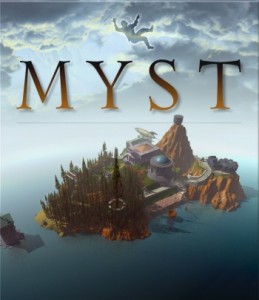
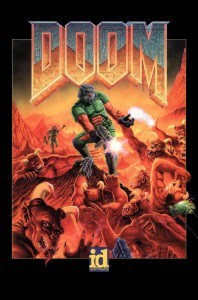
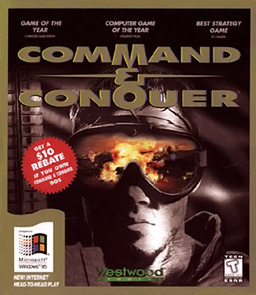
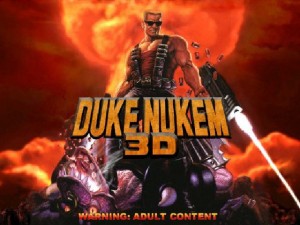
![204249 EVERQUEST MANCOV [Converted]](https://reviewfix.com/wp-content/uploads/2011/10/eq_1_cover-sms-0309-300x297.jpg)
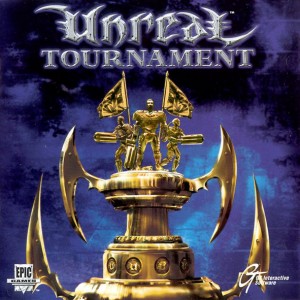

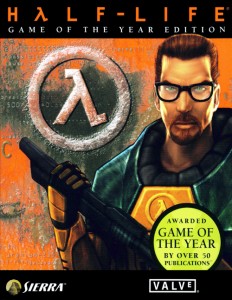
You didn’t mention Diablo??? (Probably the best pc game of the 90’s)?? Bro you need a new job, this obviously isint your type of gig. Pure shame. And pure shame on your list…
Well, to be fair, EA can’t have every game on this list…
nice burn kelso!